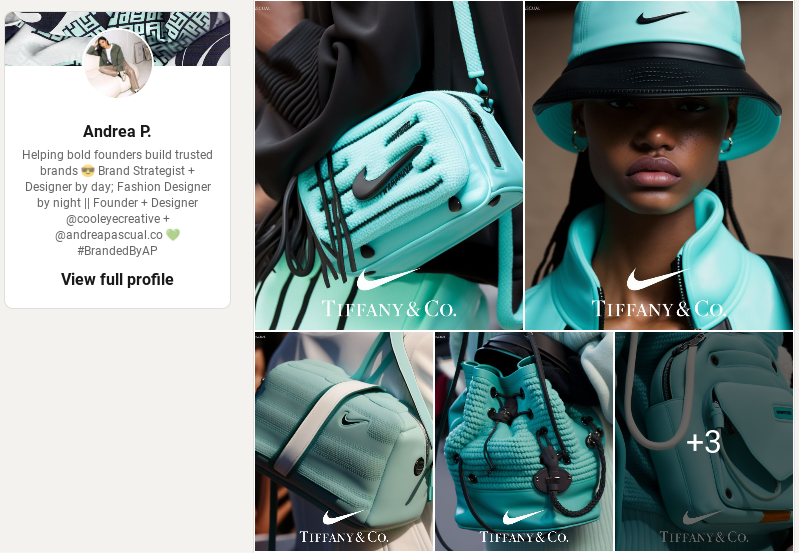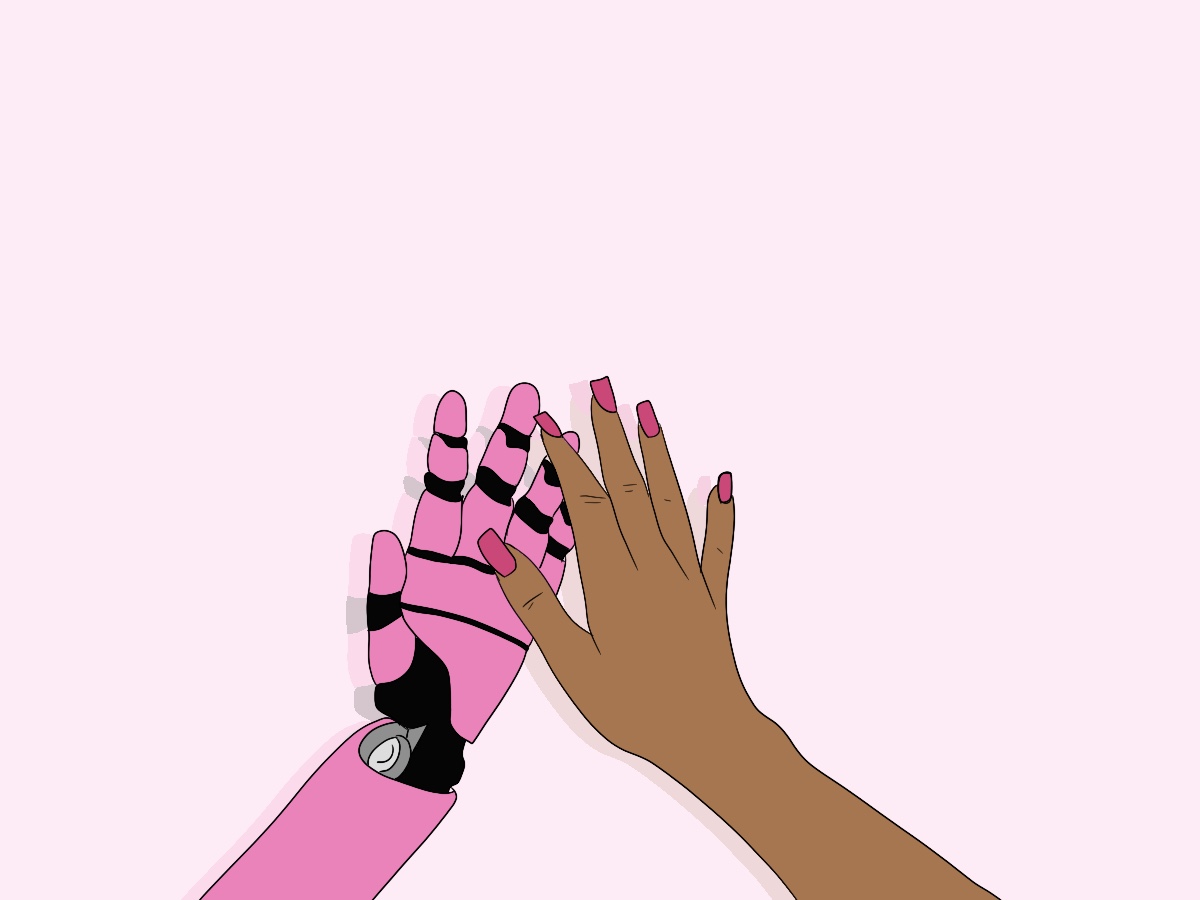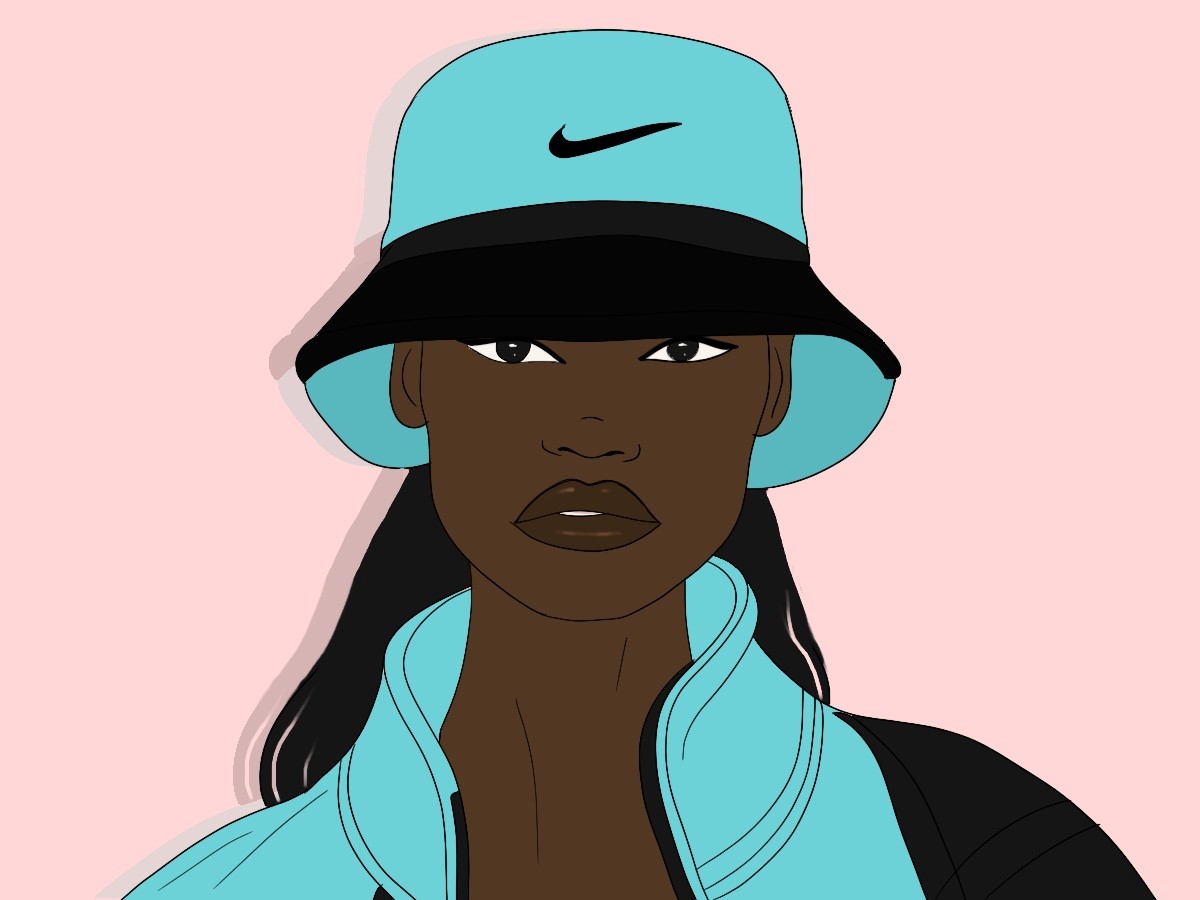Recently, I requested MidJourney, an artificial intelligence (AI) program, to configure a prompt. I was mesmerized yet terrified at the power this commercialized technology posed. While it would take fashion designers years to develop an idea through skills and experience, this AI generator took less than one minute to actualize it. Stunned yet optimistic, I had a sense of relief at the opportunities that AI would offer marginalized communities in fashion.
AI was once a foreign concept, but today it’s becoming more and more entwined with our everyday lives. Many of us use AI without even realizing it, whether that be through TikTok filters, Google Image’s search tool, or cloud-based writing assistants like Grammarly. The question remains, however, whether AI will replace us in our jobs or simply enhance our quality of life as we move further into the digital age. As we explore this question, it’s essential to consider how communities of color can ensure that AI is used to create inclusive and diverse representations of themselves.
AI can impact people of color in spaces they’ve been traditionally excluded
As a person of color, you may have used filters on social media platforms and wondered why they only seemed to worsen rather than enhance your image. This is a real concern that highlights the need for more diverse representation in AI technology.
AI is created by human engineers, known as Artificial Intelligence Specialists. According to Stanford University’s AI Index, more than 67% of professionals in this field are white men. This lack of diversity can result in digital biases, stereotyping and other problematic outcomes in physical and virtual products. Despite being marketed as a neutral entity, AI’s failures in machine learning and typical human biases can significantly affect communities of color, especially in spaces where they’ve traditionally been excluded.
The fashion industry has been criticized for its lack of diversity and inclusivity for years. While there has been some effort made to address this issue, there is still a long way to go. Unfortunately, many major fashion businesses and brands still do not see the value in investing in inclusive campaigns, even when they have a diverse fan base.
One reason for this lack of investment could be the lack of diversity within the supply chain. When a company is not diverse internally, it is more likely to curate campaigns for audiences that resemble themselves, ignoring the needs and desires of underrepresented communities. Artificial intelligence in fashion brings the opportunity to change this narrative.
As fashion trends continue to evolve, AI-driven technology is becoming increasingly important in helping brands create marketing campaigns that are cost-effective, inclusive and diverse. With the rise of small fashion brands, there has been an increase in demand for digital marketing services that cater to their specific needs. AI programs, such as Midjourney, offer an easy and affordable solution for brands to create personalized campaigns that resonate with their customer base.
AI can help us visualize the dream
Take Andrea Pascual, a Brand Strategist and Fashion Designer, for example; who recreated the Tiffany X Nike collaboration because “I was unhappy with the AF1 shoes that they dropped. As a fashion designer, I thought, ‘I can imagine something better!’” says Pascual. As the visuals below will show, she could and she did.

Pascual continues, “as a designer, I know that intentional branding and campaign imagery has the power to communicate a strong message. For example, a diverse campaign shows that the fashion designer cares about representation and diversity as part of their brand story.”
“I’m a woman of color (Filipino) and I was imagining my take on what traditional Filipino attire would look if designed as contemporary fashion and worn by Filipino models,” she explains.
While MidJourney’s generative design composed the images above, Pascual’s imagination and unique perspective are what contributed to the visual branding that Tiffany X Nike could not offer their consumers.
“AI imagery can further communities of color by giving us quick and accessible tools to create concept campaigns with people who represent us, wearing the fashion items we imagine. It definitely helps us visualize the fashion dream,” says Pascual. However, she continues, “I think that’s where it stops. Because AI isn’t real life.”
Virtual reality is not reality

While AI can help brands identify trends and patterns in consumer behavior, allowing them to optimize their marketing strategies for maximum impact, as Pascual stated, it is not the end all be all. By leveraging AI tools to showcase representation and creativity, small businesses can create campaigns that resonate with a diverse audience while showcasing their unique brand identity. However, it is crucial that businesses recognize the limitations of AI and the importance of human creativity in the design, branding, and marketing processes.
Pascual concludes, “As a brand strategist and fashion brand owner, I couldn’t, in good conscience, deliver a campaign that was executed by AI. Too many legal implications involved. I would rather hire a creative team, have set legal terms in place, and give the entire team their well-deserved flowers upon campaign launch instead.”
While AI is an additional step to the larger conversation regarding diversity in fashion, it is imperative to acknowledge that virtual reality is not reality. The ability to create a visual experience solely improves customer experiences but should not replace the customer. To ensure that underrepresented communities are included in the applications of AI, these groups need to be included in the original prompt, boardroom, fashion house, and in its engineering.
Find more beauty and style articles here >
Written by Lindsay Francois
Illustrated by Francesca Mariama
You can find Andrea Pascual on Instagram, LinkedIn and on her website.

